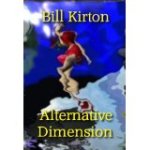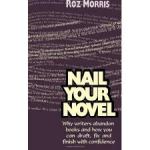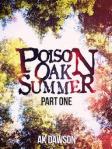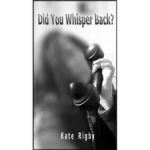 This is a second opinion review. For an earlier review (before Bill ‘came out’ as author) click HERE
This is a second opinion review. For an earlier review (before Bill ‘came out’ as author) click HERE
First of all let me say that this book is different. It is not one of Bill Kirton’s crime novels, nor is it a spoof, although Kirton’s brand of humour does shine through. I hesitate to classify this one. Is it fantasy? Is it sci fi? Or is it a blend of both. Whatever it is, I found it not only unusual but highly entertaining.
As soon as I started reading I knew I was going to like this book, although the Prologue did not really address what the book was about, and the character in the Prologue appeared only fleetingly in the story. But the character, who hates mirrors as much as his name, is the product of flower children, and because he was conceived in a barn at the Stitchley Experience event, he was named Stitchley Green. His parents, Samuel and Samantha “tossed a coin to decide whether to make love that night or wait until the following day, and do it in dew and sunshine. It was tails so Stitchley was conceived twelve minutes later on a hay bale. If the coin had come down heads, he’d have been called Dew.” I would have liked to follow Stitchley, But Kirton had other ideas.
The story is based on a computer programmer’s vision of an Alternative World. A world where people could go to relax, have fun, and be anything they want to be. He sets up this world which he calls Alternative Dimension, or AD for short, whereas real life is labelled Normal Dimension, ND for short. When describing what he has done, he says “Their avatars moved in magic kingdoms but the experiences took place in the minds of the people sitting at keyboards in ND.” Initially the world he set up reminded me of the computer game Sims, where other worlds and realities are played out on the computer. But AD goes well beyond this, and “in AD if you could imagine it you could do it.” Needless to say that the avatars acting out the imaginations of millions of people around the world created some interesting situations.
Joe gives himself two avatars. He is Ross Magee who moves around AD like any other player, but the other avatar is Red Loth, the creator of AD which is based on God’s creation of earth. But Red Loth gets more than he bargains for when other avatars demand commandments, and the compilation of these commandments was hilarious. For example, Joe thought anal leakage should be banned until he is reminded that avatars do not possess an anus! He reckoned people could worship graven images if they wanted to, and he advocated castration, the removal of the entire male organ in order to make bicycle and horse riding more comfortable. In this section Kirton comes closest to the kind of spoof writing that he is so fond of, and uses to great effect in The Sparrow Conundrum.
There is also social commentary in this book, and I loved the quote, “To the north were the Canadians, who were thought by all to be Americans, but nicer.” (apologies to any Canadians reading this but it is an example of Kirton’s satire). Kirton goes on to say that AD mimicked the world. The UK had no “industrious shopkeepers from the Indian sub-continent, no plumbers or construction workers from Poland and Eastern europe, no Russian plutoctrats” and so “AD Brits were deprived of the chance to grumble that all these foreigners were taking their jobs and claiming unemployment benefit.”
Stitchley appears briefly in chapter five, where he is classed as an entrepreneur. He takes the name of Brad the Enigma, and tries various occupations, they all fail, but then he sets himself up as a Consultant and becomes highly successful.
Joe, meantime is busy creating an environment in which normality and virtuality could be synchronised. He is trying to create the perfect world but “others found that their avatars freed them from life’s limitations, and yet their only use of freedom was to tread predictable paths.” When creating their avatars “almost everyone elected to be beautiful, fall in love, become tycoons, warlords or porn kings and queens.” Not all of the avatars are human though. There are animals of all descriptions, both real and mythical. It would seem that some people were more comfortable as cats, dragons, unicorns, dogs, horses, ad infinitum.
As the book continues Joe is not entirely pleased with how things develop. He had meant AD to be a fun place, but bureacracy has a way of rearing its head, and he is less than pleased to find the Health and Safety Inspectorate operating.
The book continues, illustrating various stories of the people involved in AD, the real life stories as well as the imaginary ones, such as the voluptuous sexy female who is, in reality, a wheelchair bound male researcher. Some of the stories are pleasant, some not so pleasant, and at one stage in the book cannibilism rears its head.
I don’t want to go much further in describing the book as I don’t want to reveal the ending. Suffice to say that AD is a place where inhibitions could be cast off and dreams lived. A place where someone could be outrageous and do anything with no consequences. It is a mix of satire, social and political commentary, with a philosophic outlook. It is a very clever and interesting novel illustrating what can happen in a perfect world.
I’m glad I read it, although it gave me a lot to think about.
Reviewed by Chris Longmuir
Available in Kindle format
Find out more about Bill Kirton











